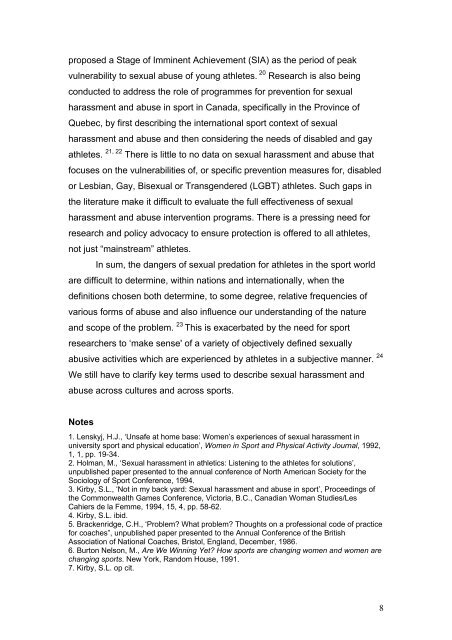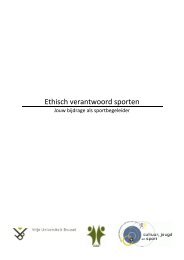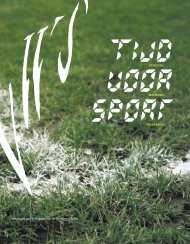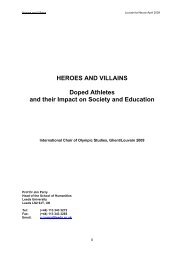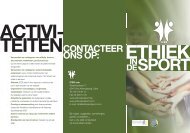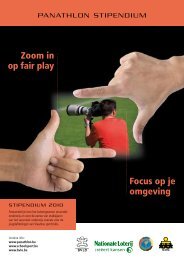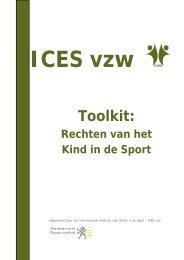Part 3 GLOBAL ISSUES: HARASSMENT AND ABUSE RESEARCH
Part 3 GLOBAL ISSUES: HARASSMENT AND ABUSE RESEARCH
Part 3 GLOBAL ISSUES: HARASSMENT AND ABUSE RESEARCH
You also want an ePaper? Increase the reach of your titles
YUMPU automatically turns print PDFs into web optimized ePapers that Google loves.
proposed a Stage of Imminent Achievement (SIA) as the period of peak<br />
vulnerability to sexual abuse of young athletes. 20 Research is also being<br />
conducted to address the role of programmes for prevention for sexual<br />
harassment and abuse in sport in Canada, specifically in the Province of<br />
Quebec, by first describing the international sport context of sexual<br />
harassment and abuse and then considering the needs of disabled and gay<br />
athletes. 21, 22 There is little to no data on sexual harassment and abuse that<br />
focuses on the vulnerabilities of, or specific prevention measures for, disabled<br />
or Lesbian, Gay, Bisexual or Transgendered (LGBT) athletes. Such gaps in<br />
the literature make it difficult to evaluate the full effectiveness of sexual<br />
harassment and abuse intervention programs. There is a pressing need for<br />
research and policy advocacy to ensure protection is offered to all athletes,<br />
not just “mainstream” athletes.<br />
In sum, the dangers of sexual predation for athletes in the sport world<br />
are difficult to determine, within nations and internationally, when the<br />
definitions chosen both determine, to some degree, relative frequencies of<br />
various forms of abuse and also influence our understanding of the nature<br />
and scope of the problem. 23 This is exacerbated by the need for sport<br />
researchers to ‘make sense' of a variety of objectively defined sexually<br />
abusive activities which are experienced by athletes in a subjective manner. 24<br />
We still have to clarify key terms used to describe sexual harassment and<br />
abuse across cultures and across sports.<br />
Notes<br />
1. Lenskyj, H.J., ‘Unsafe at home base: Women’s experiences of sexual harassment in<br />
university sport and physical education’, Women in Sport and Physical Activity Journal, 1992,<br />
1, 1, pp. 19-34.<br />
2. Holman, M., ‘Sexual harassment in athletics: Listening to the athletes for solutions’,<br />
unpublished paper presented to the annual conference of North American Society for the<br />
Sociology of Sport Conference, 1994.<br />
3. Kirby, S.L., ‘Not in my back yard: Sexual harassment and abuse in sport’, Proceedings of<br />
the Commonwealth Games Conference, Victoria, B.C., Canadian Woman Studies/Les<br />
Cahiers de la Femme, 1994, 15, 4, pp. 58-62.<br />
4. Kirby, S.L. ibid.<br />
5. Brackenridge, C.H., ‘Problem? What problem? Thoughts on a professional code of practice<br />
for coaches”, unpublished paper presented to the Annual Conference of the British<br />
Association of National Coaches, Bristol, England, December, 1986.<br />
6. Burton Nelson, M., Are We Winning Yet? How sports are changing women and women are<br />
changing sports. New York, Random House, 1991.<br />
7. Kirby, S.L. op cit.<br />
8


